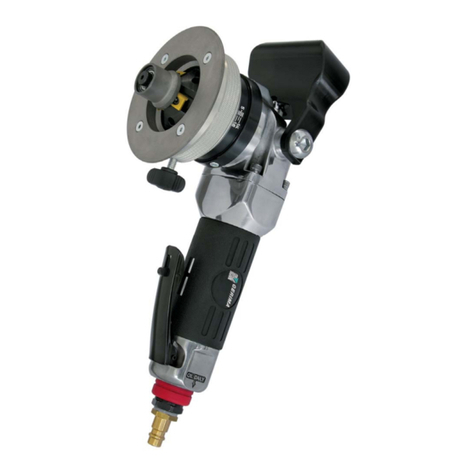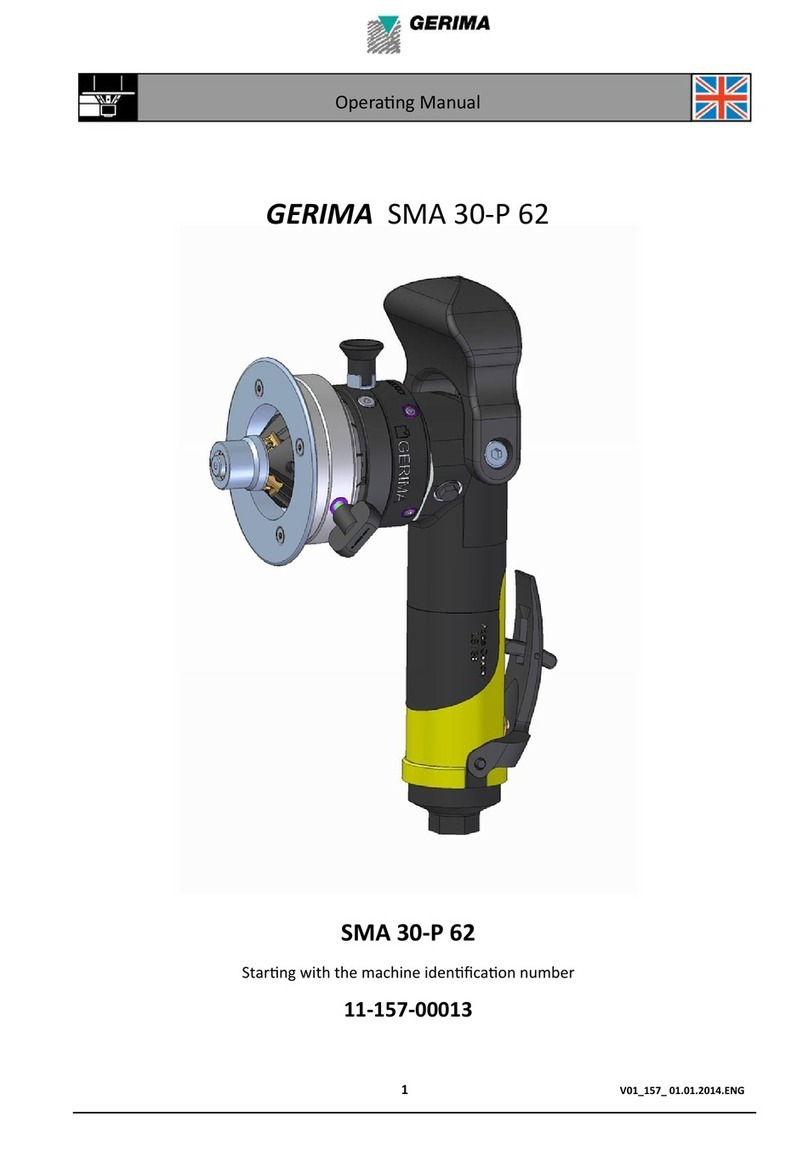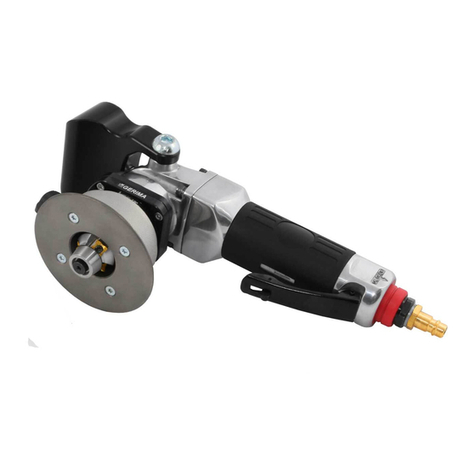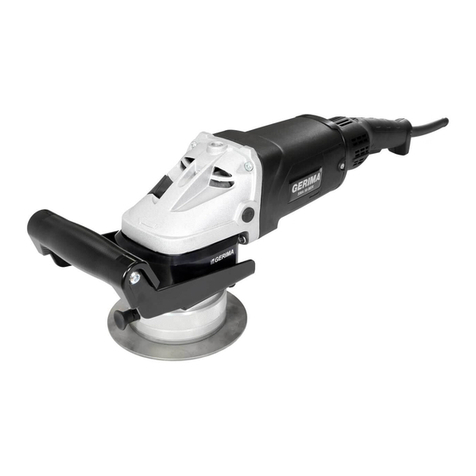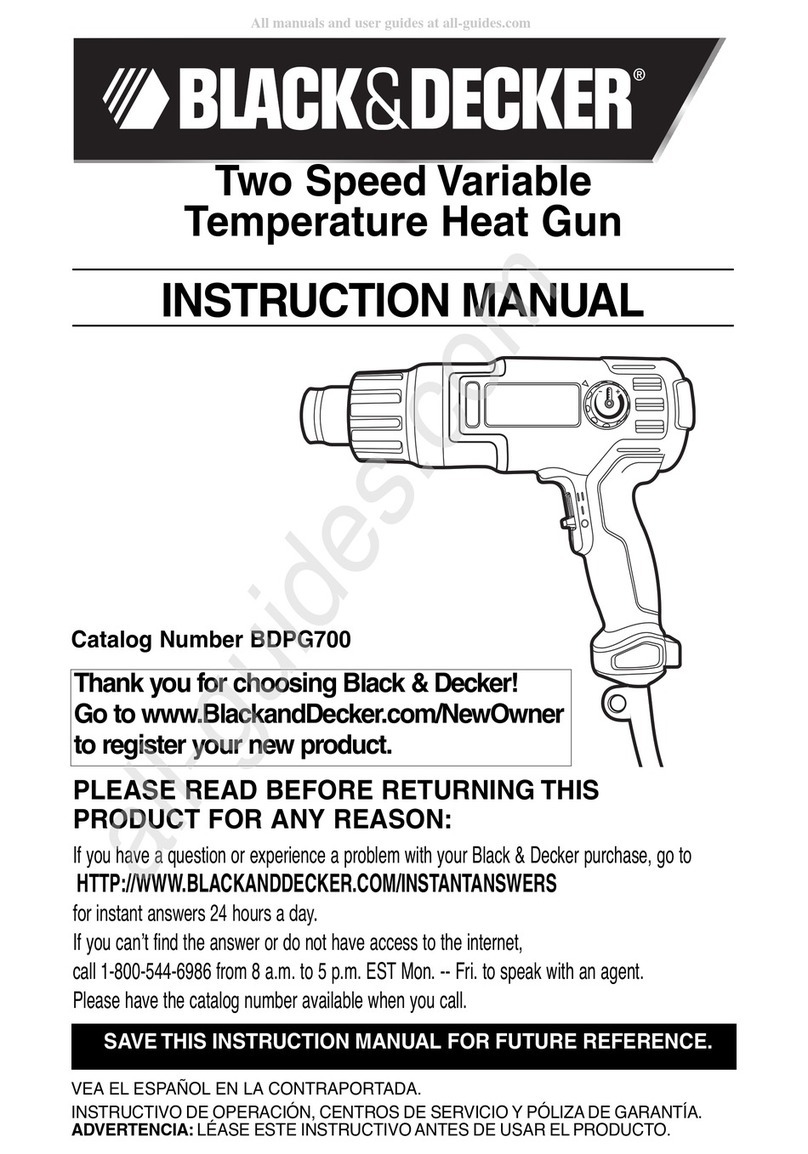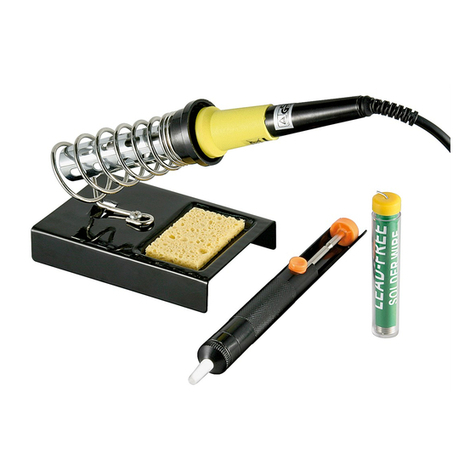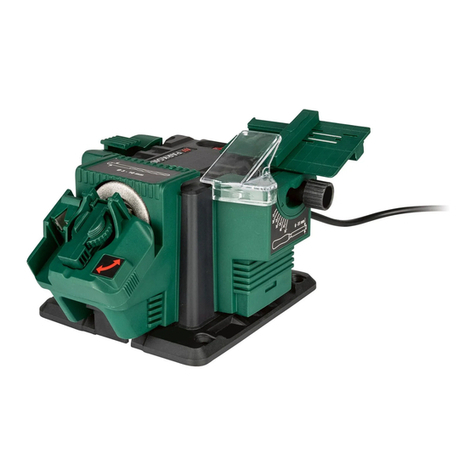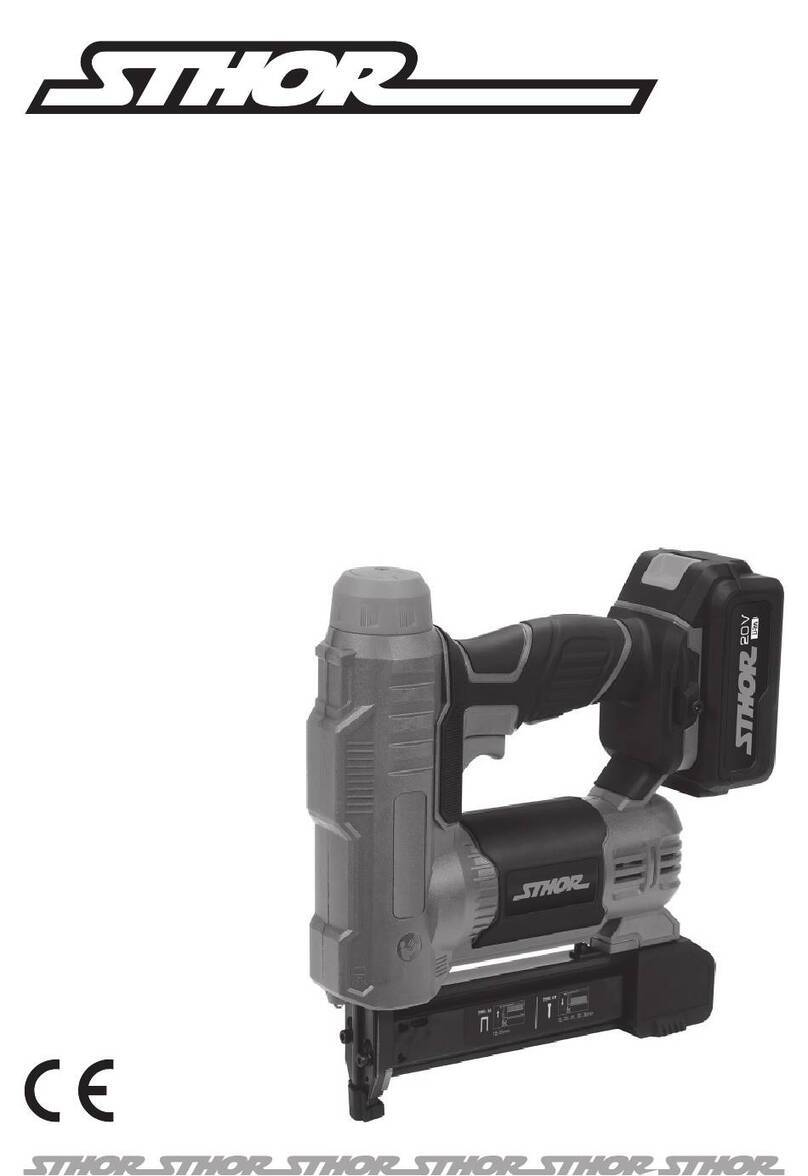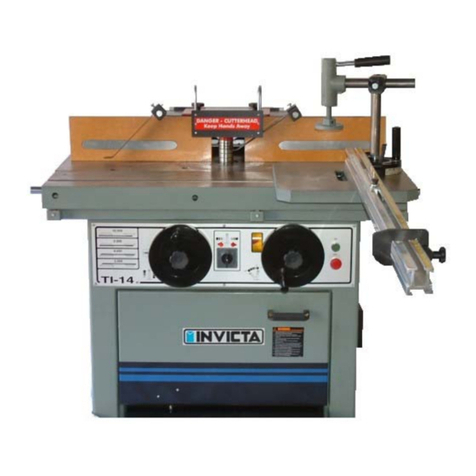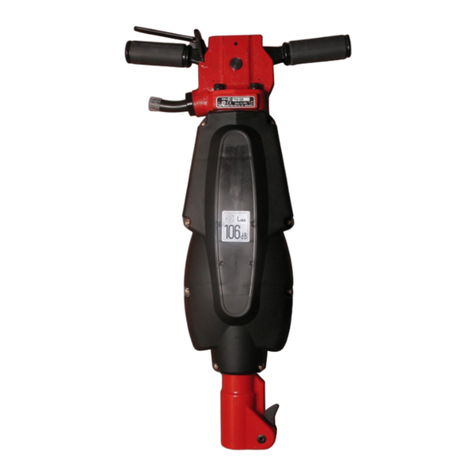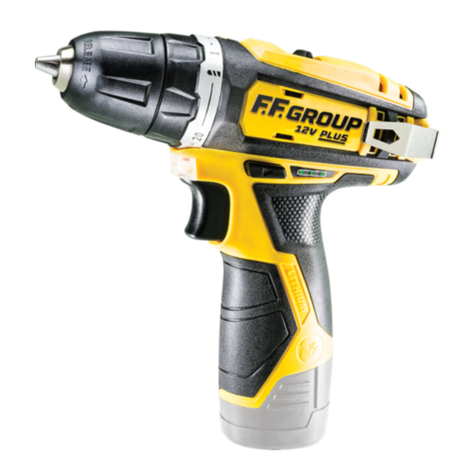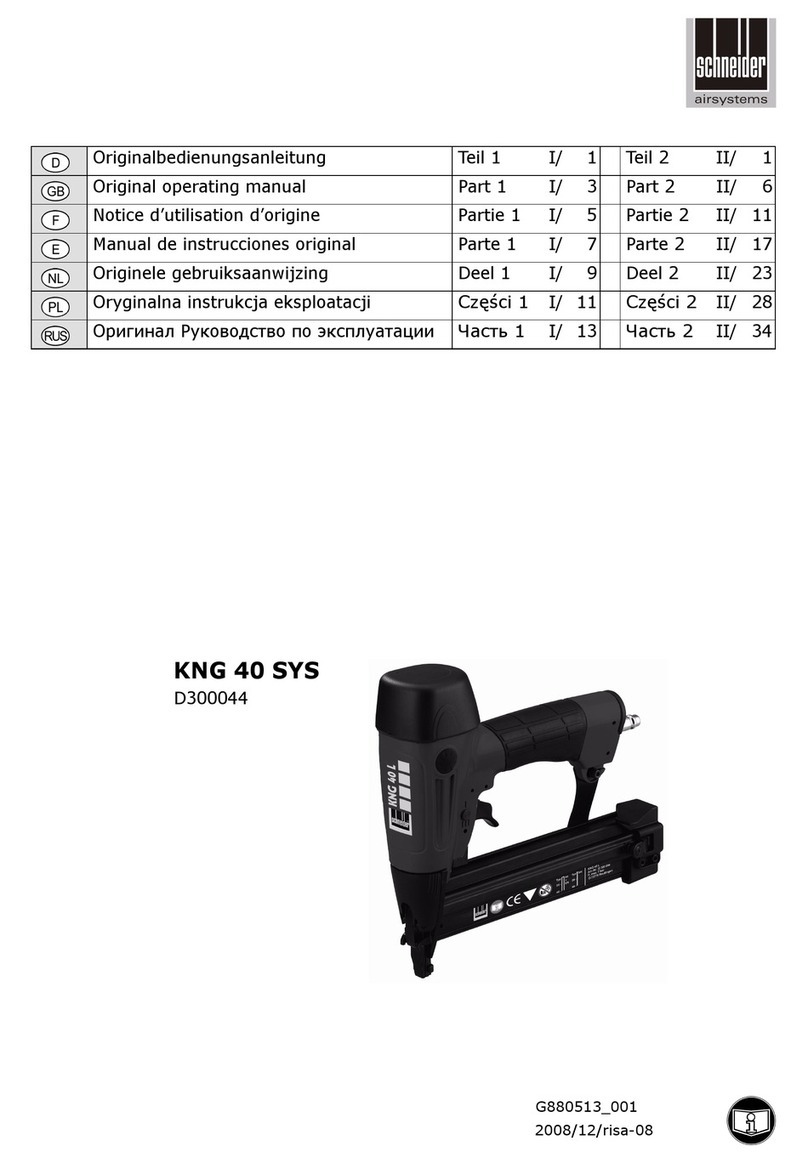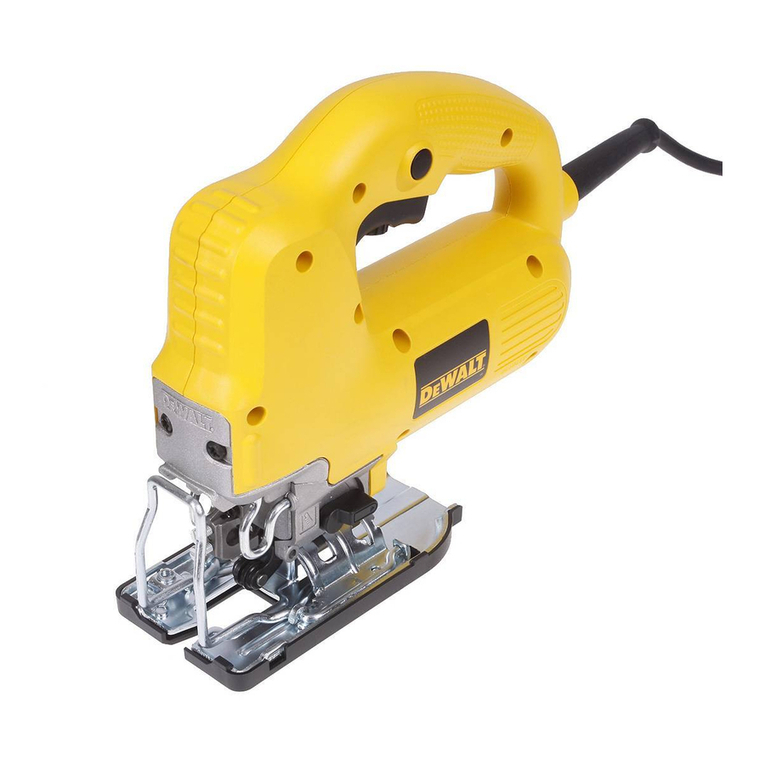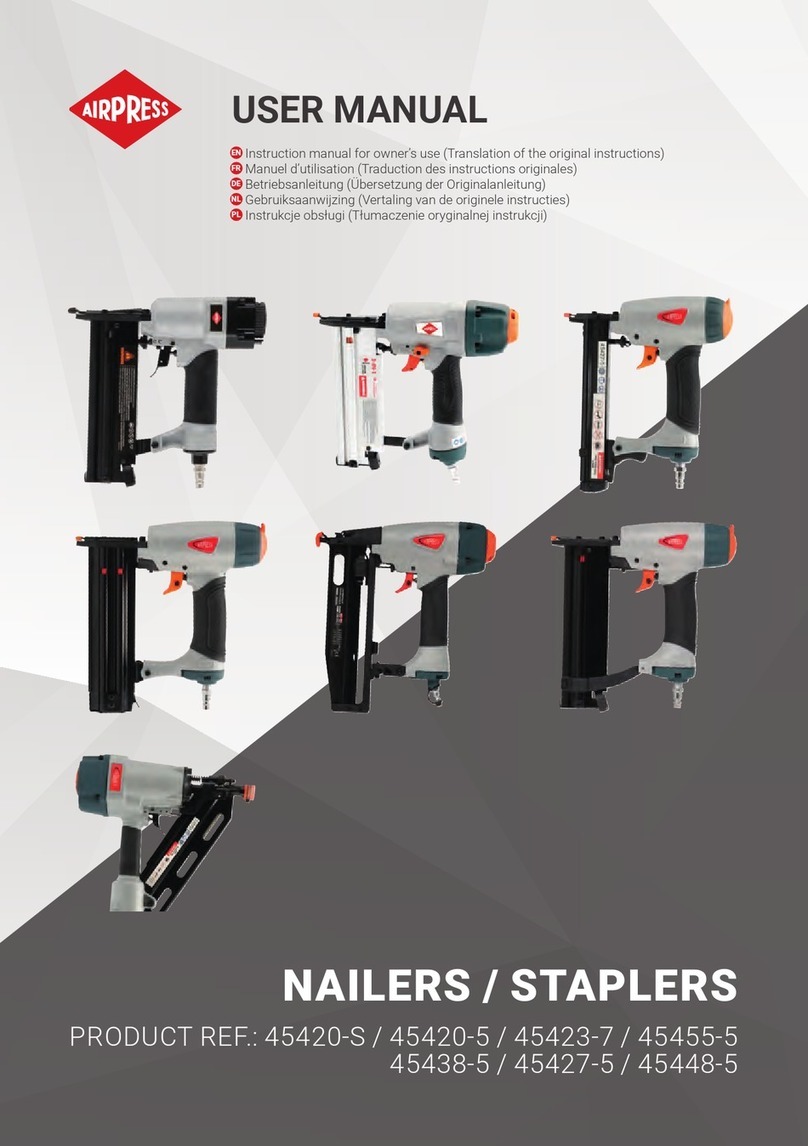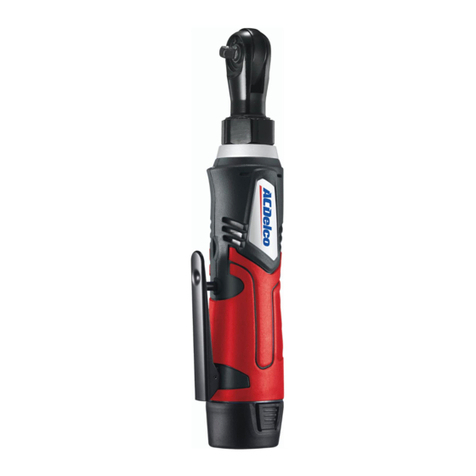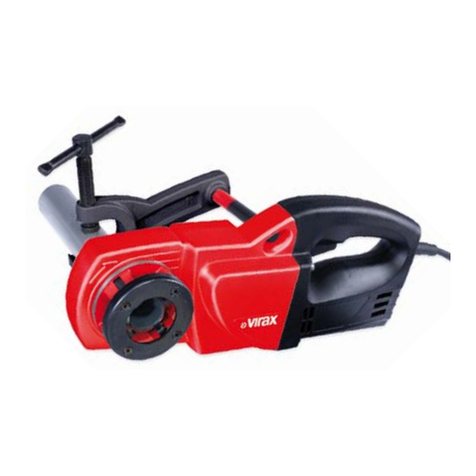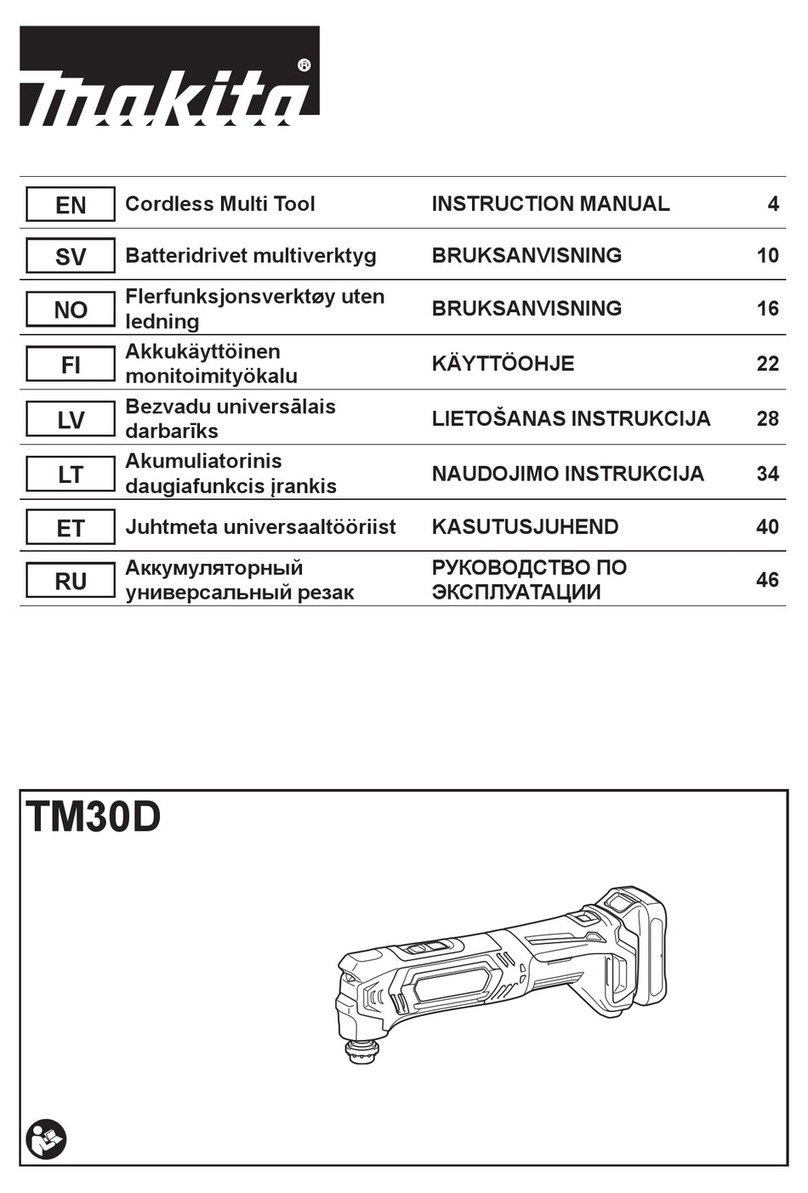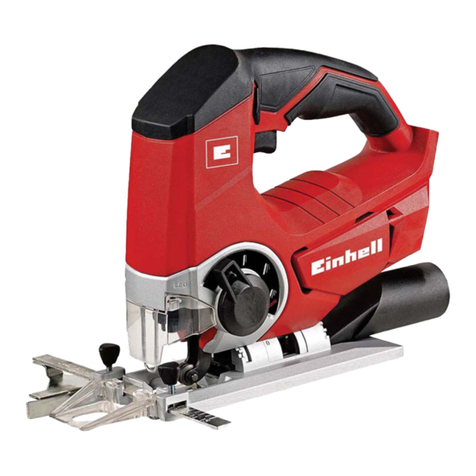Gerima SMA 50 BEV-24.F1 User manual

SMA 50 BEV-14/24.F1 / 01.01.2021 / V 01.02-ENG
©
Operating manual
Hand-held beveling machine
SMA 50 BEV-24.F1
SMA 50 BEV-14.F1
Operating manual

SMA 50 BEV-14/24.F1 / 01.01.2021 / V 01.02-ENG
©
2
Imprint
Operating manual SMA 50 BEV-24/14.F1
GERIMA GmbH
Weimarer Straße 12
D-66606 St. Wendel
Tel.: +49 (0) 6851 / 93951-0
Fax.: +49 (0) 6851 / 93951-21
E-Mail: [email protected]
All rights, including translation, are reserved. No part of this manual may be reproduced in any form (print,
photocopy, microfilm or any other process) without the written permission of GERIMA GmbH, St. Wendel,
reproduced or distributed using electronic systems, duplicated or distributed.
Subject to change.

SMA 50 BEV-14/24.F1 / 01.01.2021 / V 01.02-ENG
©
3
1. Operating issues
If you have questions regarding the use or
operation of the machine, or if you need our
supportor advice regarding specialized
applications, our team of specialist retailers
and application technicians would be
pleased to offer their assistance.
2. Servicing and repair issues
If you need to make a guarantee claim, if the
machine needs to be repaired or if you need
to order spare parts, please contact our
specialist retailers for help.
3. Sales
Our specialist retailers are also the people to
contact if you wish to purchase additional
GERIMA machine.
To help us provide quick an efficient assistance,
please always have your machine identification
number to hand.
We hope you enjoy working with your
precisionmade GERIMA machine.
The GERIMA -Team
Foreword
Dear customer,
Congratulations, you have purchased a highperfor-
mance beveling machine that will help you to
achieve high-quality results in your bevelling appli-
cations.
To ensure that the machine is used safely and
effectively, please read this operating manual
carefully in order to become properly acquainted
with the machine.
Please instruct your co-workers and employees to
become acquainted with the machine. Learning to
use the machine properly will save you time and
money, will save your employees time and effort,
and will improve the quality of your products.
Due to our policy of continuous product improve-
ment, the information contained in this manual may
be subject to change without notice.
Please contact GERIMA for the latest product in-
formation.
To verify correct functioning, the machine under-
went acceptance testing in which it processed
sheet metal of a variety of thicknesses.
Should you need to contact us for assistance,
please always have the identification number of
your
GERIMA SMA 50 BEV-24.F1
GERIMA SMA 50 BEV-14.F1
available.
The machine identification number is engraved on
the gear box (see red arrow in diagram shown at
top right of page).
Machine identification number

SMA 50 BEV-14/24.F1 / 01.01.2021 / V 01.02-ENG
©
4
Contents
1. Foreword
• Signs and symbols
3
5
2. Technical specification
• Technical data
• Sipment
• Noise emission
• Power on time
6
6
6
7
7
3. Basic safety instructions 8
4. Intended use 12
5. Settings
• Replacing carbide inserts
• Replacing guiding roll
• Replacing milling head
• Setting bevel length
13
13
13
13
13
6. Operating mode
• Working with the machine
• Settings (radius)
14
14
15
7. Consumables 16
8. Maintenance 17
9. Disposal 17
10. Technical documentation 18
11. Guarantee 23
12. EC Declaration of Conformity 24

SMA 50 BEV-14/24.F1 / 01.01.2021 / V 01.02-ENG
©
5
Signs and symbols
Please read the manual before using the ma-
chine !
This manual has been created so that you can
work with your device quickly and safely. Here is a
brief guide on how you should read this manual:
• Read these operating instructions before work-
ing with the machine. Note especially the safety
information.
• This manual is intended for people with basic
technical knowledge in dealing with devices like
the one described here. If you have no experi-
ence with such devices, you should first obtain
the assistance of experienced person.
• Keep all documentation delivered with the de-
vice, so you can get information when needed.
Keep your receipt for any warranty claims.
• If you lend or sell the machine once please give
all equipment supplied documentation with.
• For damages which arises because these oper-
ating instructions were not followed, the manu-
facturer accepts no responsibility.
The information in this manual are indentified
as follows:
Danger!
Warning of person, machinery or
environmental damage.
Risk of electric shock!
Warning of damage caused by
electricity. Failure to observe this
instruction can result in serious
injury or death.
Entanglement!
Warning of personal damage by
detection of body parts or clothing.
Restart lock! Secure the machine
against restarting and disconnect
electrical connection of the
machine. Otherwise there is a
danger of injury due to uninten-
tional starting the power tool.
Stop!
Switch on the machine prohibited!
Tip:
Additional information used to
improve the knowledge.
Ear protection!
Operating personnel must wear ear
protection. Failure to observe this
instruction may result in injury!
Eye protection!
Operating personnel must wear eye
protection. Failure to observe this
instruction may result in injury!
Hand protection!
The operator must wear protective
gloves. Failure to observe this
instruction may result in injury!
Safety shoes!
The operator must wear safety
shoes. Failure to observe this
instruction may result in injury!
Note that the substances / materials
used to handle properly and must
be disposed of according to
regulations and laws.

SMA 50 BEV-14/24.F1 / 01.01.2021 / V 01.02-ENG
©
6
Technical specification
Technical data SMA 50 BEV-24/14.F1
Dimension and weight
Length 600 mm
Weight approx. approx. 9,60 Kg
Connection value / power
Line voltage (SMA 50 BEV-14.F1) 110/120 V / 50 Hz
Line voltage (SMA 50 BEV-24.F124) 230 V / 50 Hz
Power 2,0 KW
Idle speed 6.000 U/min
Noise emission
Sound power level Lwa / dB (A) 98 dB (A)
Allowed materials and formats
Thickness of workpiece min. 3 mm
Bevel width (depending on material) 1-20 mm (depending on material)
Allowed materials
Steel 1-15 mm
Aluminium 1-20 mm
Stainless steel 1-8 mm
Radius 2-8 mm (depending on material)
1. On-/Off-switch
2. Switch lock
3. Motor
4. Hand grip
5. Scale
6. Height clamping
7. Milling head with guiding roll
8. Guide plate
9. Locking pin
10. Nonius
DANGER!
Rear handle can be rotated through 4
positions. The handle may only be ro-
tated when the machine is switched off.
When switched on, the handle must ne-
ver be rotated.
Shipment
1 x Basic machine
1 x Operating manual
1 x Hexagonal wrench SW 5
1 x Torx SW 15
1 x Copper paste
4 x Clamping screws CS 30-11
1
23
4
5
6
8
7
9
10

SMA 50 BEV-14/24.F1 / 01.01.2021 / V 01.02-ENG
©
7
Technical manual
Noise emission values in accordance with the
DIN EN 60745-1 standard:
Vibrations:
Note:
The measured values listed above
depend on the materials and
operating procedures used and may
therefore be exceeded under other
operating conditions.
Using the machine to create bevels with a width
greater than that permitted will result in a
disproportionally large reduction in the machine’s
on-time and the service life of the indexable carbide
inserts. The vibration and noise emission values
will increase accordingly.
To prevent overloading the machine and to avoid
operator fatigue it is very important to observe the
maximum power-on periods especially when
machining wide bevels or high-strength materials.
Value Un-
certainty
Noise emission [dB (A)]
Emission sound pressure
level
(in idle mode)
LpA 87 3
Peak emission sound pres-
sure level at workplace
(during milling operation)
LpGpeak 103 3
Sound power level LWA 98 3
Total vibration value
(tri-axial vector sum)
Appropriate to
DIN EN 60745:
Measured vibration
emission value
ah = 6,0 m/s²
Work process:
- 30° milling head
- 5 mm bevel width (C) in 12 mm
steel sheet S 355
Uncertainty
K = 1,5 m/s²
Power-on time (POT):
To avoid damaging the machine, it is essential to
be monitor how long the machine has been
operating continuously (‘power-on time’).
All electric brushed motors generate large amounts of
heat in the rotor and stator. Although the machine is
fitted with a fan cooler that dissipates the heat
produced, if the machine is subjected to extreme
loads (e.g. milling large bevels, very hard or tough
materials) and/or is run continuously for a long period
of time, the cooling system may not be able to cope
with the amount of heat generated. If the operator
continues to use the machine, the rotor (armature)
may overheat to such an extent that the winding
insulation melts causing a short circuit.
(C=bevel width, POT=power-on time)
The power-on time is always expressed as a
percentage of one hour.
Example: If the power-on time is specified as 50 %,
then you can use the machine to mill bevels for a
maximum of 30 min. in an hour and must then leave
the machine to cool for 30 min.. If the machine is
subjected to heavy loads, the power-on time might be
20 %, which means it can be used for 12 min. in any
hour and must be left to cool for 48 min.. Before
completely switching off the machine, we recommend
running the machine for one or two minutes in idle
mode (unloaded) so that fan can continue to draw
cool air through the machine.
Do not overload the machine!
The machine can become overloaded if, for example,
it continues to be used even though the bevel being
cut is too large for the material being milled, or if the
cutting inserts have become blunt and therefore
unable to penetrate the material. Such conditions can
lead to large machine vibrations or even machine
breakdown if the armature in the motor is bent to
such an extent that the rotor and stator rub against
each other, overloading the windings and blowing the
motor. To prevent this sort of damage when milling
large bevels and/or hard materials, never try to
machine the bevel in a single pass, always use
multiple passes, and do not forget to change the
carbide inserts before they become blunt or worn.
Total vibration value
(tri-axial vector sum)
Appropriate to
DIN EN 60745:
Measured vibration
emission value
ah = 6,0 m/s²
Work process:
- 30° milling head
- 8 mm bevel width (C) in 12 mm
steel sheet S 355
Uncertainty
K = 1,5 m/s²
Material strength CPOT
max. max.
Aluminium, copper, brass 20mm 40-80%
Steel up to 400 N/mm² 15mm 30-60%
Steel up to 600 N/mm² 15mm 20-50%
Steel up to 900 N/mm² 15mm 20-40%
Stainless steel 8mm 20-40%

SMA 50 BEV-14/24.F1 / 01.01.2021 / V 01.02-ENG
©
8
Basic safety instructions
Duties of the operator
The SMA 50 BEV-24/14.F1 was de-
signed and built taking into account a
risk analysis and careful selection of
the applicable harmonized standards
and technical specifications.
It thus corresponds to the prior art and allows for
maximum safety during operation.
However, the machine safety can only be effec-
tively implemented in practice, if all necessary
measures have been taken. It is the duty of care
and responsibility of the machine operator to plan
these measures and to monitor their execution.
The operator must in particular ensure that:
• the machine must only be used for its intended
use (see chapter intended use).
• the machine must only be operated in perfect
working condition and especially the safety de-
vices must be checked regularly for proper
function.
• the required protective equipment for the opera-
tion, maintenance and repair staff must be
available and must be used.
• the operating instructions must always in good
condition and fully available at the machine.
• only qualified and authorized staff may operate,
maintain and repair the machine.
• this staff must be instructed regularly about re-
levant occupational safety and environmental
protection and know the operating instructions
and the safety instructions.
• all safety instructions and warnings attached to
the machine must not be removed and must
remain legible.
The following instructions must be
read carefully in order to avoid ac-
cidents to persons and / or proper-
ty damage
• Never attempt to operate the machine before
you have read and understood the content of
this operation manual.
• If you are unsure about any points, please
contact GERIMA for assistance.
• Never attempt to operate the machine before
you have read and understood the content of
this operation manual.
• If you are unsure about any points, please
contact GERIMA for assistance.
• Make sure that all persons who will be operating
or servicing the machine have read and under-
stood all the relevant safety information.
• Before starting the machine, the operator must
ensure that all safety equipment is properly in-
stalled and functioning correctly.
• Never use the machine for purposes other than
those specified in this manual. Never use the ma-
chine to process materials other than those ap-
proved for use by the machine’s manufacturer. If
you are considering using the machine for an un-
approved purpose, please first contact GERIMA
to request approval of your proposed application.
• Check that all electrical connections are secure
and sound. Never attempt to service or repair the
machine before it has been disconnected from
the power supply.
• Always use genuine GERIMA spare parts and
accessories or those that have been approved for
use by GERIMA.
If you encounter a problem or fault when operat-
ing the machine and you are unable to solve the
issue with the aid of this manual, please contact
GERIMA for rapid assistance.
Operator qualifications and protection of machine
operators:
The term ‘operator’ is used here to mean any person
who operates, adjusts, services and/or repairs the
machine.
The employer is obliged to inform the operator about
security relevant standards and to verify compliance.
To be trained operating personnel may initially work
only under the supervision of an experienced person
on the machine. Successful completion of training
should be confirmed in writing.
All control and safety devices must always be opera-
ted only by trained personnel.
All persons carrying out work on the machine must
read the operating instructions and confirm with their
signature that they have understood the operating
instructions.
The workplace must be well lit and provide sufficient
space for safe working.

SMA 50 BEV-14/24.F1 / 01.01.2021 / V 01.02-ENG
©
9
Basic safety instructions
Before working with or on the
machine, the operator must have
become acquainted with the
machine and must have read and
understood this manual.
The operator must
1. ensure that all guard plates are in place and all
safety mechanisms are functioning correctly
before starting the machine.
2. not wear clothing or accessories
(jewellery etc.) that could be get
trapped in moving machine parts.
3. always wear protective clothing (non-slip shoes,
ear protection, gloves and safety goggles.
4. observe all relevant safety instructions. If a
problem arises, the operator must refer to
this manual before continuing with his or her
work.
Protective clothing:
When working on/with the machine always wear:
ear protectors,
safety goggles,
protective gloves,
safety shoes
Requirements to be met by operating staff:
The machine may only be operated by appropri-
ately trained persons who have been instructed in
the use of the machine and are authorized to oper-
ate it.
Operators must have read and understood this
operating manual and must act in accordance with
it. The functions of the operating personnel, i.e.
what an operator is or is not allowed to do, must be
clearly specified.
Special qualifications are required for the follow-
ing activities:
• Commissioning: The machine may only be com-
missioned by the manufacturer.
• Operational training: Training in the use of the ma-
chine must be provided either by the manufacturer
or by persons who have received appropriate in-
struction.
• Fault elimination: Faults may only be dealt with by
appropriately qualified technical staff or by the
manufacturer’s service personnel.
• Maintenance: Maintenance work may only be per-
formed by technical staff who have received ap-
propriate instruction.
• Cleaning: The machine may only be cleaned by
persons who have received appropriate instruc-
tion.
• Servicing: The machine may only be serviced by
appropriately qualified technical staff or by the
manufacturer’s service personnel.
• Repair: The machine may only be repaired by ap-
propriately qualified technical staff or by the manu-
facturer’s service personnel.
• Decommissioning: Decommissioning of the ma-
chine may only be performed by appropriately
qualified technical staff or by the manufacturer’s
service personnel.
Risk of injury from hot metal chips:
• Hot chips are ejected from the
machine at high speed.
Improper use can cause serious injury:
• Make sure you always have a firm
footing when working with the
machine.
• Never touch the milling tool when
machine is running.
• Never use the machine above head height.
• Ensure the switch is in the off-position before
connecting to power source. After use de-energize
the machine by disconnecting it from the power
supply!
• Only milling against the rotating direction = upcut
milling!

SMA 50 BEV-14/24.F1 / 01.01.2021 / V 01.02-ENG
©
10
Basic safety instructions
Improper use can damage equipment and pro-
perty:
• Working with worn or damaged
carbide inserts or milling heads will
cause the machine to fail.
• Make sure the cable is directed
behind and away from machine. Do not lay the
cable over sharp edges.
• Avoid collisions when working with machine.
• Never lift or carry machine by its power cable.
• Always use genuine GERIMA spare parts and
accessories.
Damages caused by wrong power supply!
• Check the supply voltage. It must
correspond with the specifications
on the type plate of the machine.
Risk of electric shock! Warning of
physical injury by electricity
• All work on the machine’s electrical systems
must be performed only by qualified electrical
technicians.
• Electrical equipment must be checked regularly.
• Any loose connections must be reattached and
any damaged wires or cables replaced immedi-
ately.
• Never attempt to clean electrical equipment or
systems with water or other similar liquids.
• Use only genuine replacement fuses that match
the specified voltage and current.
• The machine should always be supplied with
powervia a residual current device (RCD) with a
rated current of 30mA or less.
Machine hazards :
• The machine has been built in accordance with
the latest engineering standards and generally
recognized safety principles. Nevertheless, im-
proper use can result in serious or fatal injury to
the user and/or third parties or cause damage
to the machine or other property. The operator
is obligated to comply with the applicable laws
and regulations, especially when used outside
the EU. This is especially the case if the exten-
ded claims have to be implemented by
appropriate amendments to laws and regulations.
The machine must only be used:
• For its intended purpose.
• If it is safe and in good repair.
• In compliance with the operating manual and by
persons who are aware of the safety issues and
hazards associated with the machine.
• Faults that could affect the safety of the machine
must be remedied immediately.
Regular pre-start safety precautions
• Check and ensure that all of the
machine’s safety and protective
equipment is in place and function-
ing correctly.
• Check the machine for visible signs of damage.
Any defects or deficiencies identified must be
remedied immediately or reported to the supervi-
sor. The machine may only be used if it is safe
and in a state of good repair.
• Check and ensure that only authorized persons
are within the machine’s work area and that no
other persons can be endangered by switching
on the machine.
• All objects and other materials that are not nee-
ded for the operation of the machine must be
removed from the machine’s work area.
• The measures to be taken in an emergency are
known.
Basic Safety Measures for Normal Operation:
• The machine may only be started
from the specified workstation.
• Two-handed operation: Whatever
the position of the machine, always
use two hands to control the machine!
• During operation of the machine safety devices
must not be removed or rendered inoperable.
• The operator may be present only at the spe-
cified workplace during operation of the machine.
• The operator must ensure that no unauthorized
persons are in the working area of the machine.
• After switching off the machine, the operator
must wait until all moving parts have stopped and
the lights are off function.

SMA 50 BEV-14/24.F1 / 01.01.2021 / V 01.02-ENG
©
11
Basic safety instructions
• If protective guards or other safety devices have
to be removed for servicing or maintenance work,
they must be reinstalled immediately after the
work has been completed.
• Use only listed operating and auxiliary materials.
• Use only genuine spare parts as listed in the
spare parts list.
• Check bolted connections for tightness.
• Before restarting the machine, make sure that
nobody can be endangered by the running ma-
chine.
• Any unsafe operation is prohibited!
• Never put safety devices inoperative!
• Never wear hanging or protruding clothes which
could become trapped in moving machine parts!
• After maintenance check all safety devices for
function!
Consequences when nonobservance:
• Injury hazards for personnel!
• Damage to the machine!
• Modifications of the machine can
affect the correct operation and sa-
fety of the machine!
Modifications to the machine:
The machine may not be modified, ad-
ded to or converted unless the prior
consent of the manufacturer has been
granted.
Any alterations to the machine must have been ap-
proved by GERIMA GmbH.
This also applies to the welding of the component
parts.
Maintenance:
Maintenance or service work must
only be performed once the machi-
ne’s moving parts have come to
rest. Machine parts may become
very hot during operation.
• De-energize the machine by dis-
connecting it from the power supp-
ly.
Machine hazard points:
Milling head
• Never touch the milling head when
the machine is running.
Safety information for servicing, maintenance
and fault elimination:
• Any person who installs, commissions, opera-
tes, inspects, services or maintains the machine
must have read and understood the operating
manual and in particular the safety information
contained therein.
• Machine adjustment, maintenance and inspec-
tion work must be carried by appropriately qua-
lified technical staff.
• Servicing and maintenance work must only be
carried out by appropriately qualified technical
staff.
• All operating equipment must be secured
against accidental activation or energization.
• When performing any servicing, maintenance or
repair work de-energize the machine by dis-
connecting it from the supply and ensure that
the machine cannot be switched on again ac-
cidentally. Put up a warning sign prohibiting
reactivation of the machine (lock and tag out
procedure).

SMA 50 BEV-14/24.F1 / 01.01.2021 / V 01.02-ENG
©
12
Basic safety instructions / Intended use
Cleaning machine and disposal information:
All substances and materials used
must be handled appropriately and
accordance with all relevant statutory
provisions and legislation.
The machine must only be cleaned after it has
been switched off!
Machine noise:
The continuous sound power level emitted by ma-
chine at installation site is greater than > 84 dB (A).
Operating personnel must wear ear
protection
Residual risks:
• The machine was plant and constructed with all
suitable devices to guarantee the safety and
health of the operator.
• The machine is covered to prevent the risk of
contact with moving parts.
• However residual risks still exist.
• As already mentioned the cutting area is protec-
ted as far as possible but there is an opening
portion through which the processing material
must be introduced.
• It is possible that the operator reaches in this
area with his hands.
Always keep your hands as far as
possible away from the cutting
area!
Always oberserve the safety rules
to minimize the residual risks!
Be aware that the machine may be
a source of residual mechanical or
electrical energy. Appropriate pre-
cautions for dealing with these ha-
zardous energy sources must be
taken when instructing operating
personnel on the use of the machi-
ne.
Interval Action
Daily Sweep machine clean using a brush
Weekly Thorough clean using industrial cleaner
The hand-held beveling machine SMA 50 BEV-
24/14.F1 may only be used for work and materi-
als described in the section ‚intended use‘.
Do not use the machine to work on
materials containing asbestos!
The SMA 50 BEV-24/14.F1 is a hand-held, electri-
cally powered beveling machine intended:
• For machining workpieces made of steel, cast
steel, fine-grained steel, stainnless steel, alumini-
um, aluminium alloy, brass and plastic.
• For commercial use in industrial settings and in
the skilled-trades.
• For preparing K-, V-, X-, and Y-shaped welding
grooves.
• For creating visible edges in plant and mechani-
cal engineering work.
• For rounding off of edges for an optimal painting
preperation or as a scratch and bump protection.

SMA 50 BEV-14/24.F1 / 01.01.2021 / V 01.02-ENG
©
13
Settings
Replacing carbide inserts / guiding roll / milling
head
Before replacing always disconnect
the machine from the power supply
by removing the power cable from
the socket and secured against
reconnection!
Lock the spindle, then loosen the guiding roll
with the hexagonal wrench SW 5 and lift/
remove the guiding roll.
Loosen the clamping screws with the Torx
wrench T15 and replace the carbide inserts.
The inserts must be fastened to the mounting
seat on the milling head bymeans of the origi-
nal locking screws (max. tightening torque: 4.0
–5.0 Nm).
Attention: Wear gloves due to risk
of cutting and burns
Loosen the milling head
retaining screw with the
hexagonal wrench SW 5
and remove the milling
head.
To remove the milling head easier out
of the guiding of the driving shaft you
have to turn the guide wheel a little bit
into the milling head and use the gui-
ding roll as a handle to lift the milling
head up.
Please note:
At tighten of the holding screw of the
milling head always turn to the stop so
that the locking washer is active in the
milling head.
Lock spindle
A
B
C
Setting the bevel length
The bevel length (a) is set by adjusting the position
of the guide plate (2). The height setting can be read
out at the main scale (1) and the vernier collar (4).
Release locking pin (5) and clamping screw (3).
Rotate the guide plate (2) until the required bevel
length has been set as shown by the main scale (1)
in combination with the vernier scale on the collar
(4). Retighten clamping screw (3) and lock locking
pin (5).
Once the bevel height has been set, a bevel should
be milled on a test sample to check whether further
height adjustments are required. These may be
necessary because the precision of the scale is
approximately ± 1 mm, depending on the type of
milling head fitted.
The values below are experical values, no guarantee
values! Some materials can harden on the edges of
the workpiece when working with flame cutting,
plasma and laser cutting. This can result in
significant deviations from the specified reference
values.
a leg length = bevel length a
b leg length = bevel length b
C bevel width
α bevel angle
β opposite angle
A bevel size
h bevel height
S oddment
t plate thickness
1
3
4
2
5

SMA 50 BEV-14/24.F1 / 01.01.2021 / V 01.02-ENG
©
14
Operating mode
General
Two-handed operation
Whatever the position of the
machine, always use two hands to
control the machine!
When working with the machine, make sure that the
machine is always held with two hands and in such a
way that both hands are kept away from the
machining point.
Ensure that the workpiece is securely clamped!
• For safety reasons
• To improve the service life of the
carbide inserts
• To prevent damage to the beveling
machine
Important!
Before you begin machining the work-piece, make
sure that it is securely clamped so that it cannot slip.
This should be done to ensure safe working so that
the workpiece does not slip or even fly off when
being milled, and to prevent unnecessary vibrations
in the workpiece material.
The less vibration generated in the workpiece, the
longer the service life of the carbide inserts.
To get to know the machine, it is
necessary to use a small bevel width of
max. 2 mm at low feed rate. Only with
practiced handling, the maximum bevel
sizes are safe to work.
1
2
Operation
Damages caused by wrong power supply!
• Check the supply voltage. It must
correspond with the specifications on
the type plate of the machine.
Improper use can cause serious injury:
• Make sure you always have a firm
footing when working with the
machine.
• Never touch the milling tool when the
machine is running.
• Always guide the machine away from the body
while working.
Improper use can damage equipment and
property:
• Working with worn or damaged
carbide inserts or milling heads will
cause the machine to fail.
• Avoid collisions when working with
the machine.
Working with the machine
First push on/off-switch (2), then press switch lock
(1) until it clicks into place.
Motor starts
Bring the machine slowly
into contact with the work-
piece only after the tool
speed has been reached.
Machining the workpiece
When milling bevel always move the machine from
left to right against direction of rotation of the milling
head (up-cut milling). When machining bore holes,
always work in a clockwise direction (up-cut milling).
The arrows on the guide plate represent the direction
of rotation of the milling head at the machining point.
Motor turn off
Remove the machine from workpiece and release
the locking switch. Once the motor is switched off,
wait for it to come to a standstill before placing the
machine down on a surface.

SMA 50 BEV-14/24.F1 / 01.01.2021 / V 01.02-ENG
©
15
Settings (radius)
correct
too low
too high
Adjusting the radii:
Please note that only the position of the upper
edge of the radius can be adjusted by rotating the
guiding plate. The lateral position of the radius on
the workpiece end face is determined by the guide
wheel fitted and cannot be altered.
Guiding plate set too low
(radius incomplete)
Guiding plate set too high
(radius cuts into material)
Guiding plate set correctly
(radius fully formed with smooth transition to work-
piece surfaces)
too large
Guiding roll too large
(radius incomplete)
too small
Guiding roll too small
(radius cuts into material)
> 90°
Angle greater than 90°
(radius incomplete)
< 90°
Angle smaller than 90°
(radius cuts into material)
Notes on radius milling:
Choosing the right guiding roll to ensure the correct
lateral position of the radius is just as important as
setting the correct height of the guiding plate.
If the wrong guiding roll is used, the machined radi-
us will not form a smooth transition with the end
face of the workpiece.
If the guiding roll used is too large, the appearance
of the resulting radius is similar (but rotated by 90°)
to that created when the guiding plate is set too low.
If the guiding roll used is too small, the appearance
of the resulting radius is similar (but rotated by 90°)
to that created when the guiding plate is set too
high.
The same phenomenon arises if the end and upper
faces of the workpiece are not aligned at right
angles to one another.
If the edge of workpiece to be machined was crea-
ted by cutting with a plasma cutter, the upper and
end faces of the workpiece may be out of rectangu-
lar alignment by as much as 7°. This type of misa-
lignment will result in a radius that is either incom-
plete or that cuts too far into the material depending
on whether the upper or lower surface of the work-
piece is being machined.
Although our conically shaped gui-
ding rolls are designed to put up
against the workpiece immediately
below the carbide inserts and can
therefore minimize the problem, they
cannot eradicate it entirely. Machi-
ning a correct radius therefore requires a 90° angle
between the adjacent faces of the workpiece.

SMA 50 BEV-14/24.F1 / 01.01.2021 / V 01.02-ENG
©
16
Overview and order numbers carbide inserts for bevel and radii:
Consumables
Function Name of part
Aluminium
Copper
Brass
Steel
up to 600 N/
mm²
Steel
up to 900 N/
mm²
Stainless
steel Order-nr.
Bevel
DX4.B10-V1 x0101.404.19-00078
DX4.B12-V1 xx0101.404.19-00079
DX4.B15-V1 x0101.404.19-00080
Radius 3mm
R3-KX8.B20-V1 x0101.404.19-00023
R3-KX8.B22-V1 xx0101.404.19-00024
R3-KX8.B25-V1 x0101.404.19-00035
Radius 4mm
R4-KX8.B20-V1 x0101.404.19-00025
R4-KX8.B22-V1 xx0101.404.19-00026
R4-KX8.B25-V1 x0101.404.19-00036
Radius 5mm
R5e-KX8.B20-V1 x0101.404.19-00027
R5e-KX8.B22-V1 xx0101.404.19-00028
R5e-KX8.B25-V1 x0101.404.19-00033
Radius 6mm
R6e-KX8.B20-V1 x0101.404.19-00029
R6e-KX8.B22-V1 xx0101.404.19-00030
R6e-KX8.B25-V1 x0101.404.19-00032
Radius 8mm
R8-FV4.B10-V1 x0101.404.19-00039
R8-FV4.B12-V1 xx0101.404.19-00040
R8-FV4.B15-V1 x0101.404.19-00041

SMA 50 BEV-14/24.F1 / 01.01.2021 / V 01.02-ENG
©
17
Maintenance
Maintenance
Before serving the machine always
disconnect the machine from the
power supply by removing the
power cable from the socket !
Repair must only be carried out by
a GERIMA trained technician!
Improperly repaired machines are hazzard!
• Increased risk of injury
• Machine does not function correctly!
Hot carbide inserts and milling head!
• Burn hazzard!
• Wear protective gloves when replacing the
carbide inserts!
Maintenance plan:
Service procedure 1:
Re-greasing / Caution!
The guarantee will be void if re-greasing is carried
out by anyone other than a certified GERIMA
service technician. Replenish with about 40 g of
the high-performance lubricating grease
0101.204.04-00018.
Service procedure 2:
To ensure that the machine can be cooled
properly, the ventilation slots must be kept clean.
To avoid damaging the motor windingd, it is
important that no foreign matter (e.g. chippings)
enter the motor compartment. Clean the motor
compartment regularly by blowing compressed air
through it.
12
4
3
3
Blunt tool can cause damage!
• Blunt tool can overload the machine!
• Inspect milling tools regulary for
signs of wear.
• Wear protective gloves when chan-
ging or readjusting the carbide
inserts!
Service procedure 3:
For replacing brushes, open both covers (3), remove the
old brushes and insert the new. Close the opening with
the covers.
Service procedure 4:
Unscrew and remove the guide plate, rotate and
remove the guide plate holder, clean
the mounting thread, lubricate
the thread with teflon spray,
then reassemble in
reverse order.
Part to be serviced Type of mainte-
nance work
Service Maintenance
procedure
Materials
required
Order-nr.
Mitre gear Re-grease every 250
operating hours
Cerfied GERIMA
service agent
Disassemble
gear head
Lubrication
grease
0101.204.04-00018
Ventilation slots Daily Machine
operator
Clean ventilation
slots
Brush, cloth,
compressed air
Carbon brushes Replace as necessary Electrical
technician
See page
17
Carbon brushes
(set)
0101.453.18-00001
Height adjuster
thread
Clean and lubricate
as necessary
Trained
technician
Disassemble guide
plate
Teflon spray 0000.064.15-00018
Carbide inserts Rotate or replace as
necessary
Machine
operator
See page
13
List of consumables
from page 16
1
2
3
4
Disposal of components removed from the machine
All machine parts and operating and auxiliary materials must be disposed of in accordance
with the applicable statutory provisions.

SMA 50 BEV-14/24.F1 / 01.01.2021 / V 01.02-ENG
©
18
Technical documentation
Gear unit SMA 50 BEV-04.F1 0202-26-06-04-00-07
nr. name of part order-nr. pc.
2Steel sleeve with grooves 0101.482.20-00002 1
3Counter ring 0101.482.20-00003 1
4Round handle with puncture protection 0101.482.19-00025 1
5Guide plate - holder 0101.482.20-00001 1
12 Holding plate handle 0101.442.18-00021 1
17 Spacer 0101.143.09-00032 1
18 Threaded insert M8x15 0101.143.09-00033 1
20 Guide plate 0101.143.09-00002 1
22 Cylinder screw M6x10 0000.022.14-00118 3
28 Countersunk screw M5x8 0000.022.14-00115 4
30 Countersunk screw M5x12 0000.022.14-00108 4
35 Hexagon socket screw M8x20 0000.022.14-00205 2
36 Hexagon socket screw M5x20 0000.022.15-00221 4
37 Wingscrew M8x20 0000.032.14-00058 1
41 Threaded insert M8x15 0000.022.14-00117 2
42 Locking pin with groove 0000.032.16-00124 1

SMA 50 BEV-14/24.F1 / 01.01.2021 / V 01.02-ENG
©
19
Technical documentation
Gear unit upper part SMA BEV-04.F1 0202-26-06-04-00-07
nr. name of part order-nr. pc.
1Spacer bevel gear 0101.432.18-00013 1
7Drive shaft, split, top 0101.442.19-00015 1
8Bevel gear (Z=52) 0101.442.19-00016 1
13 Bearing housing (upper part) 0101.442.18-00020 1
14 Drive unit 2000 W / 230 V / 6.000 rpm 0101.342.18-00018 1
14 Drive unit 2000 W / 120 V / 6.000 rpm 0101.342.18-00020 1
16 Washer 0101.172.14-00011 1
21 Cylinder screw M6x14 0000.022.14-00192 4
23 Sealing plug 0000.032.16-00051 2
24 Disc spring 0000.022.16-00040 1
26 Locking ring 0000.022.16-00251 1
27 Locking ring 0000.022.17-00201 1
34 Needle roller bearing 0000.032.14-00007 1
38 Spacer 0,1 0101.052.16-00057 4
39 Deep groove ball bearing 0000.012.14-00033 1

SMA 50 BEV-14/24.F1 / 01.01.2021 / V 01.02-ENG
©
20
Technical documentation
Gear unit lower part SMA 50 BEV-04.F1 0202-26-06-04-00-07
nr. name of part order-nr. pc.
9Cover 0101.442.19-00005 1
10 Bearing housing (lower part) 0101.442.19-00004 1
11 Drive shaft, split, bottom 0101.442.19-00003 1
15 Flywheel with spring magazine 0101.442.19-00002 1
19 Threaded insert M6x14 0101.143.09-00023 3
25 Snap ring 0000.022.14-00202 1
29 Countersunk screw M5x16 0000.022.14-00116 4
31 O-ring 12x1 0000.042.19-00001 1
32 O-ring 59,99x2,62 0000.042.14-00011 1
33 O-ring 20,3x2,4 0000.042.14-00013 1
40 Deep groove ball bearing 0000.012.14-00035 1
43 Pressure spring 0000.032.15-00015 9
This manual suits for next models
1
Table of contents
Other Gerima Power Tools manuals
